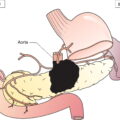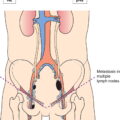The staging system applies only to intrahepatic cholangiocarcinoma, cholangiocellular carcinoma, and combined hepatocellular and cholangiocarcinoma (mixed hepatocellular/ cholangiocellular carcinoma) For right liver intrahepatic cholangiocarcinoma, the regional lymph nodes include the hilar (common bile duct, hepatic artery, portal vein and cystic duct), periduodenal and peripancreatic lymph nodes. For left liver intrahepatic cholangiocarcinoma, regional lymph nodes include hilar and gastrohepatic lymph nodes. For intrahepatic cholangiocarcinoma, spread to the coeliac and/or periaortic and caval lymph nodes are distant metastases (M1). The pT and pN categories correspond to the T and N categories. Note pM0 and pMX are not valid categories.
LIVER – INTRAHEPATIC BILE DUCTS (ICD‐O‐3 C22.1)
Rules for Classification
Regional Lymph Nodes
TNM Clinical Classification
T – Primary Tumour
TX
Primary tumour cannot be assessed
T0
No evidence of primary tumour
Tis
Carcinoma in situ (intraductal tumour)
T1a
Solitary tumour 5 cm or less in greatest dimension without vascular invasion (Fig. 207)
T1b
Solitary tumour more than 5 cm in greatest dimension without vascular invasion (Fig. 207)
T2
Solitary tumour with intrahepatic vascular invasion or multiple tumours, with or without vascular invasion (Figs. 208, 209)
T3
Tumour perforating the visceral peritoneum (Fig. 210)
T4
Tumour involving local extrahepatic structures by hepatic invasion (Fig. 210) 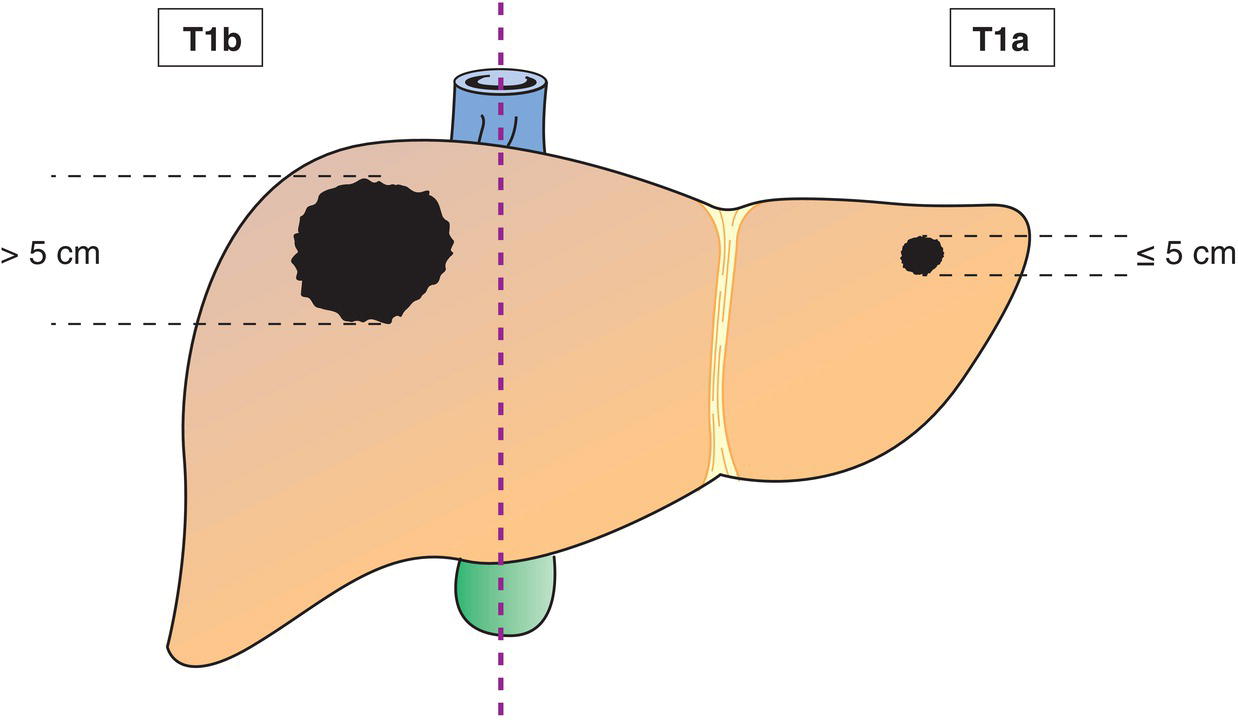
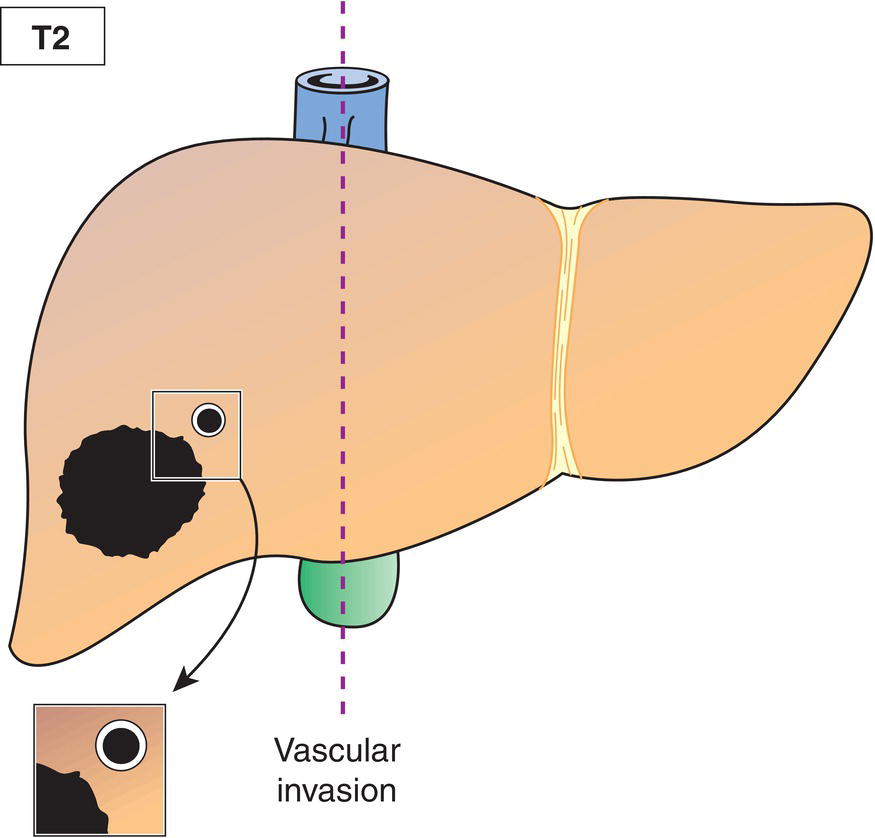
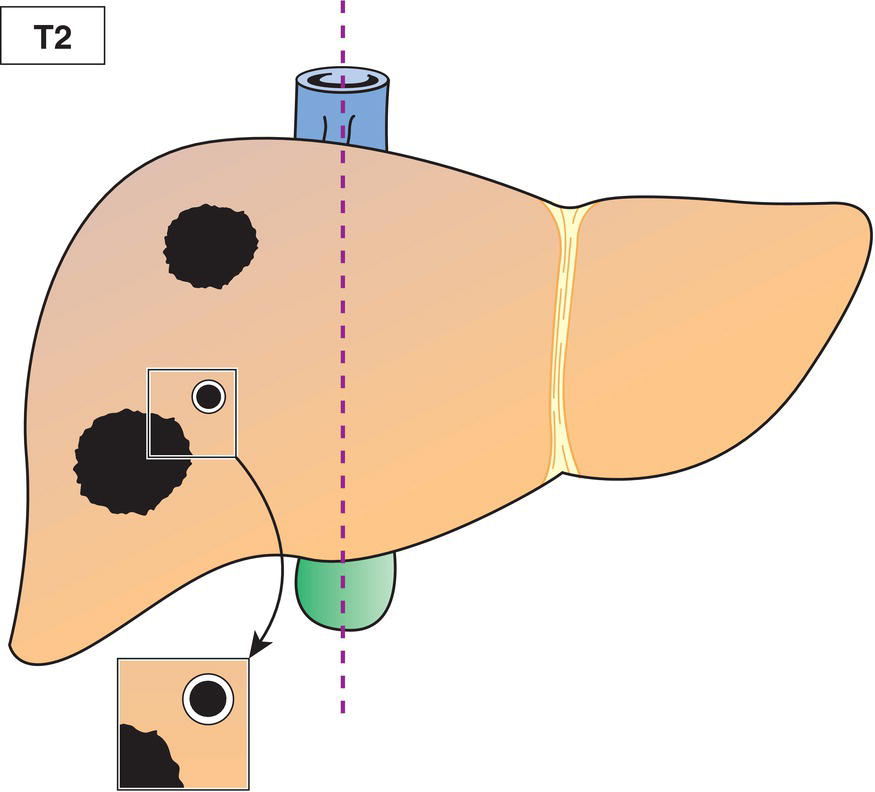

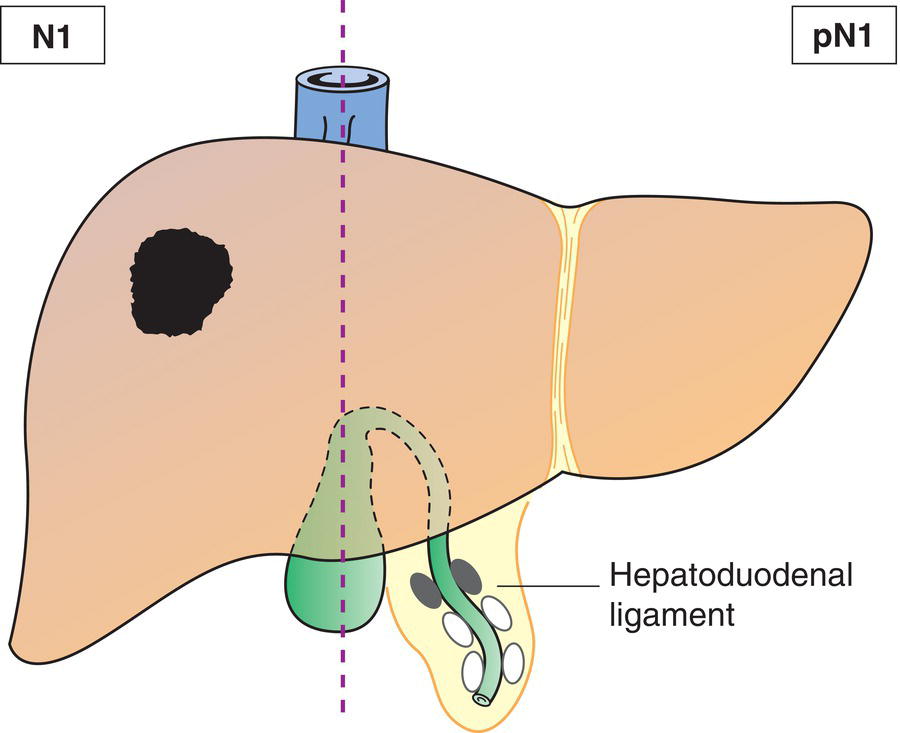
N – Regional Lymph Nodes
NX
Regional lymph nodes cannot be assessed
N0
No regional lymph node metastasis
N1
Regional lymph node metastasis (Fig. 211)
M – Distant Metastasis
M0
No distant metastasis
M1
Distant metastasis
TNM Pathological Classification
pM1
Distant metastasis microscopically confirmed
pN0
Histological examination of a regional lymphadenectomy specimen will ordinarily include 3 or more lymph nodes. If the regional lymph nodes are negative, but the number ordinarily examined is not met, classify as pN0.
Summary
Stay updated, free articles. Join our Telegram channel

Full access? Get Clinical Tree



